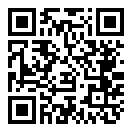An American Phenomenon: The Widespread Psychiatric Drugging of Infants and Toddlers

The use of powerful antipsychotics with privately insured children, aged 2 through 5 in the US, doubled between 1999 and 2007, according to a study of data on more than one million children with private health insurance in the January, 2010, “Journal of the American Academy of Child & Adolescent Psychiatry.”
The number of children in this age group diagnosed with bipolar disorder also doubled over the last decade, Reuters reported.
Of antipsychotic-treated children in the 2007 study sample, the most common diagnoses were pervasive developmental disorder or mental retardation (28.2%), ADHD (23.7%), and disruptive behavior disorder (12.9%).
The study reported that fewer than half of drug treated children received a mental health assessment (40.8%), a psychotherapy visit (41.4%), or a visit with a psychiatrist (42.6%) during the year of antipsychotic use.
“Antipsychotics, which are being widely and irresponsibly prescribed for American children–mostly as chemical restraints–are shown to be causing irreparable harm,” warned Vera Hassner Sharav, president of the Alliance for Human Research Protection, in a February 26, 2010 InfoMail.
“These drugs have measurable severe hazardous effects on vital biological systems, including: cardiovascular adverse effects that result in shortening lives; metabolic adverse effects that induce diabetes and the metabolic syndrome,” she wrote. “Long-term use of antipsychotics has been shown to result in metabolic syndrome in 40% to 50% of patients.”
The lead researcher on the study above, Columbia University psychiatry professor Mark Olfson, told Reuters that about 1.5% of all privately insured children between the ages of 2 and 5, or one in 70, received some type of psychiatric drug in 2007, be it an antipsychotic, a mood stabilizer, a stimulant or an antidepressant.
Psychiatric drugs bathe the brains of growing children with agents that threaten the normal development of the brain, according to Dr Peter Breggin, founder of the International Center for the Study of Psychiatry and Psychology (ICSPP), and author of about 20 books, including “Medication Madness.”
The drugs themselves are causing severe disorders in millions of children in the US, he warns. “Substances like antidepressants, stimulants, mood stabilizers, and antipsychotic drugs cause severe, and potentially permanent, biochemical imbalances.”
American Phenomenon
A number of presentations at the annual meeting of the American Psychiatric Association in May 2009, addressed the diagnosis of bipolar disorder, including one titled, “Pediatric Bipolar Disorder: A Critical Look at an American Phenomenon,” at which Dr Peter Parry, a consultant child & adolescent psychiatrist, and senior lecturer at Flinders University in Australia, presented a survey on, “Australian and New Zealand’s Child and Adolescent Psychiatrists’ Views on Bipolar Disorder Prevalence and on Rates of Pediatric Bipolar Disorder in the USA.”
Dr Parry and his colleagues conducted a survey of child and adolescent psychiatrists in Australia and New Zealand. Of the 199 psychiatrists who responded to the survey, 90.5% thought pediatric bipolar disorder was overdiagnosed in the US.
In an October 1, 2009 article titled, “Medicating Our Children,” Dr Parry reports that since “the mid-1990s in the USA, some researchers have claimed that Paediatric Bipolar Disorder (PBD) frequently starts prior to puberty.”
One of PBD’s main proponents, Harvard University’s Professor Joseph Biederman, stating onset “is squarely in the preschooler age group,” he notes.
Parry explains that “PBD has been created by moving the diagnostic goalposts away from traditional concepts of bipolar disorder.”
“In children,” he says, “episodes were redefined to last hours instead of days or weeks and, instead of manic elation, severe anger in children sufficed as mania.”
“Unlike diagnoses like ADHD or depression, or simply accepting a child has serious emotional and behavioural problems in reaction to various stressors, PBD implies a lifelong severe mental illness requiring of strong psychiatric medication,” Parry warns.
“In the USA,” he says, “the public is furthermore exposed to direct pharmaceutical advertising that can feed the natural desire parents of distressed and aggressive children have for a quick solution by suggesting a simple medication fix.”
“The medicating of America’s children has become intensely controversial, highlighted by the tragic case of Rebecca Riley, a four-year-old Boston girl diagnosed at 28 months old with ADHD and PBD,” he points out.
Leave a Reply
You must be logged in to post a comment.




 NoScript extension
NoScript extension
